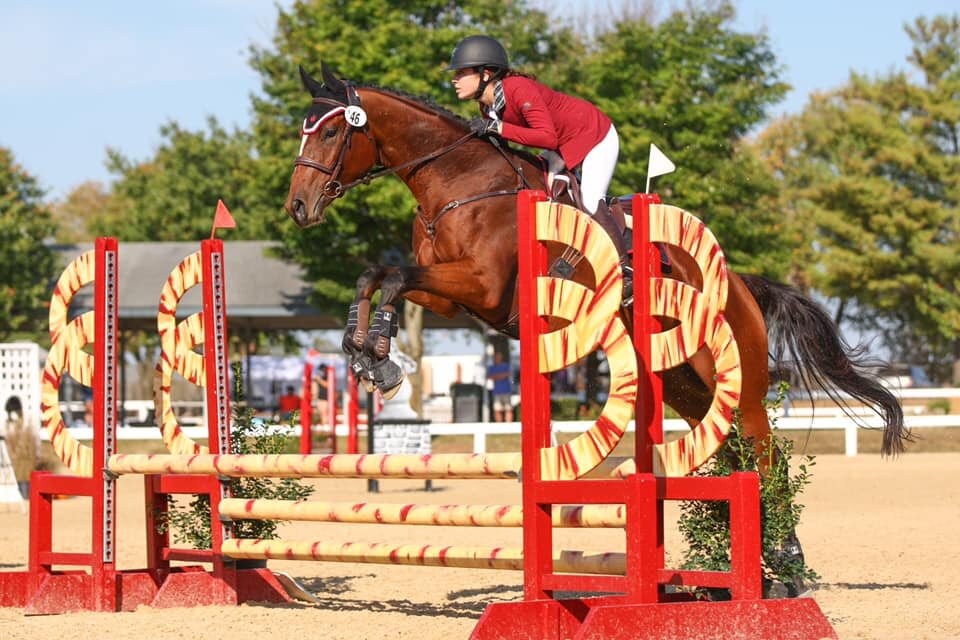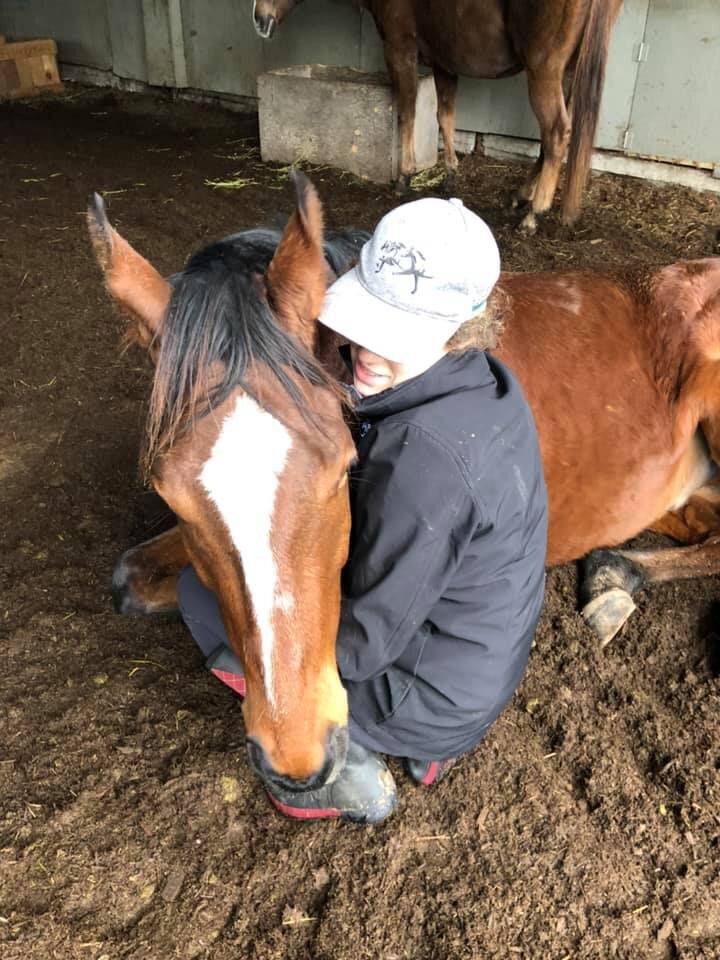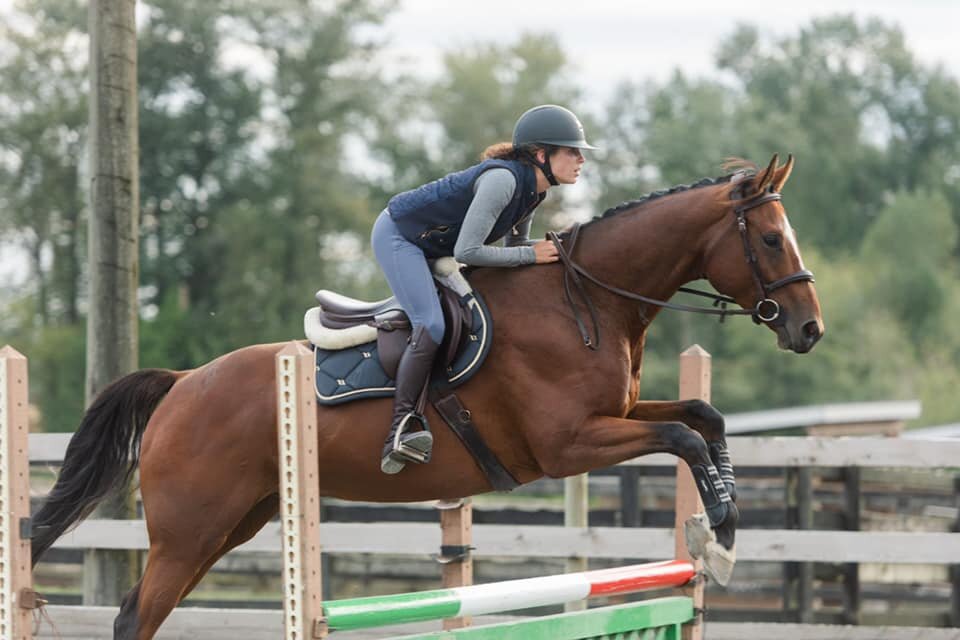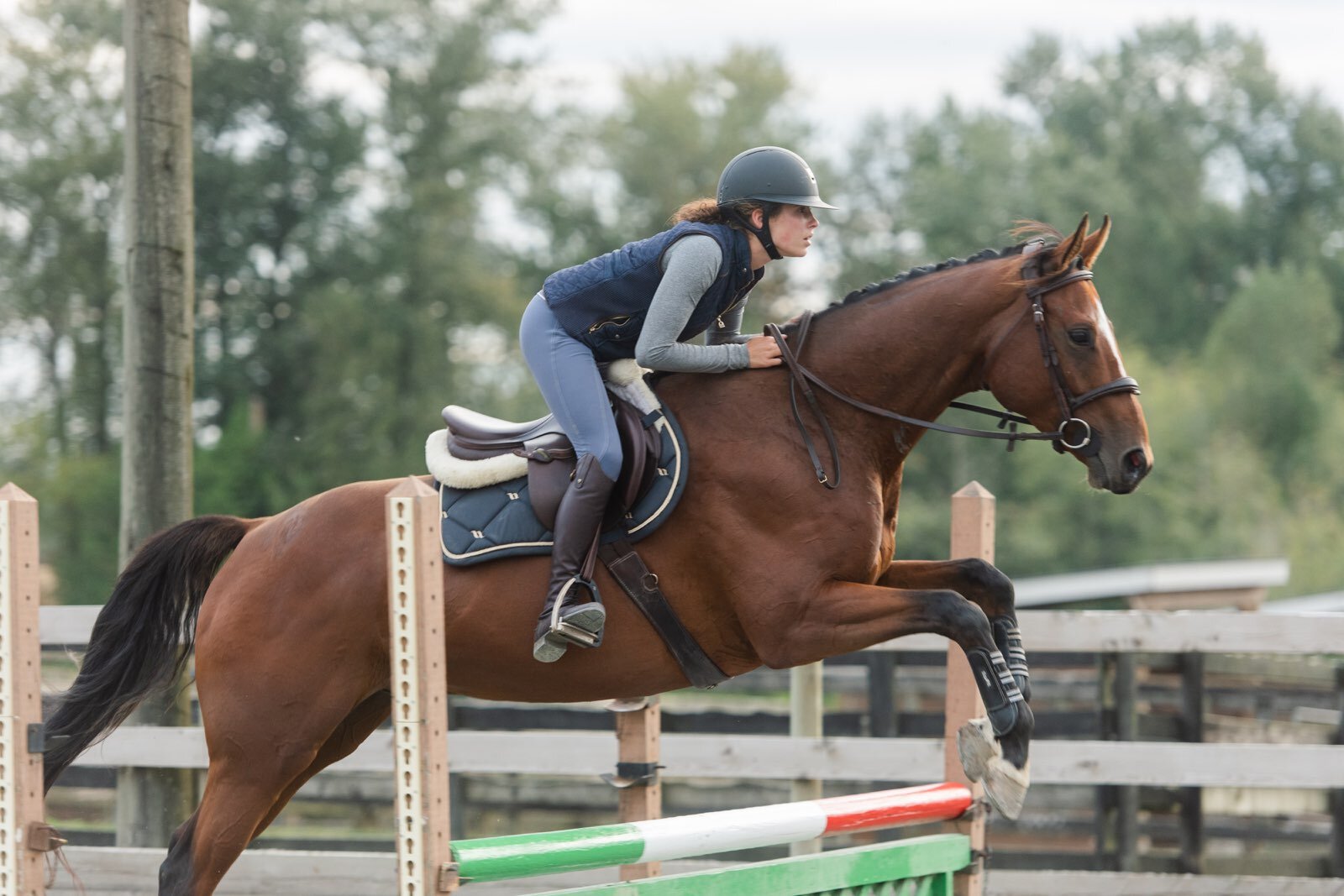People who choose to work with animals generally do so from a raw passion that is the initial catalyst for their interest. Horse people are no different. Many of us started out working with horses after an innocent enthrallment with the animals, often finding ourselves in awe of their beauty and with a magnetic desire to get close to them, learn about them and soak up the positive energy that is their gentleness. Generally speaking, the sheer love for the animal is what appeals most to those who end up dedicating their lives to working and training animals, an industry that is often unforgiving, low paying and difficult to make a living in. You have to love the work to dare follow such an uncertain career path.
So, why do some horse people stray down the path of corruption and cognitive dissonance that allows them to participate in what may be blatant, or veiled, abuse and neglect of animals? How does someone go from the awestruck child or adult to someone who exploits their horses for personal gain without any regard for the specific needs of the flight animal? Where do we go wrong?
When people outside the horse world think of horse abuse, more often than not, the first industry that comes to mind is the racing industry. This is likely much to the relief of equine enthusiasts who participate in show horse disciplines. It is easier to have industries other than your own be the ones under fire for abuse. It allows for a separation from mistreatment and a blaming of others, all while patting yourself on the back for not participating in what you may perceive as systemic abuse. But, to be frank, it is a cop out.
As someone who participates in both the show horse world and horse racing world as a professional, an employee and a competitor, few things frustrate me more than watching my fellow show world equestrians jump on the bandwagon of attacking problems within the racing world and vilifying all participants in it based only on what they have heard or seen in the media. This judgment and the gloating about their own riding and care of their horses like they’re somehow immune to the very same demons of corruption that plague aspects of the racing world is hypocritical. I do not understand how people who claim to love their horses and want the best for them can be so overtly tone deaf.
The fact of the matter is that the greatest change comes from within. You cannot expect naive people with limited equine knowledge and no awareness of how specific horse industries function to be the ones with the best ideas on how to fix them or the ability to determine if they’re unfixable and must be banned. This means that, as the participant, you are responsible for recognizing the need for change and inciting necessary reform. If you lack the self reflection skills to be able to be critical of your own equestrian discipline of choice, you simply have no business judging others. It is far too easy to become comfortable contributing to the “not in my backyard” mindset: picking apart issues in other equestrian sports, while brushing under the rug our own problems just because it is viewed to be worse elsewhere. This is evident in the horse world’s witch hunt on the racing industry and tacit acceptance of abuses in other highly visible disciplines.
We are all responsible as participants to not only recognize the needed areas of change in our disciplines, but to advocate for them. Part of advocacy is holding people who do wrong accountable, something the horse world is especially bad at. I have borne witness to people defending pedophilic equestrian trainers, racism and other forms of discrimination so it really is no surprise that people are willing to readily defend the abuse and neglect that their idols are guilty of by using the “if you’ve not competed at this level, you can’t talk” excuse. This is the favoured justification of show horse people, and the irony in it is so thick that I would need a chainsaw to cut through it.
You see, apparently, as a competitor, rider, trainer, and educated observer, you are not qualified to judge whether or not an upper level professional’s conduct is justified unless you have competed at the same level as them. The people who perpetuate this claim are probably Olympic level mental gymnasts, so excuse me for judging their logic since I’ve not gone to the mental Olympics. But… in what world does it make even the slightest sense to say that someone needs to jump 1.60m to come to the conclusion that perhaps flight animals don’t enjoy bit set ups engineered to cause pain if they don’t easily comply, electrified spurs, being whipped for refusals and so on?? How would jumping a substantially sized course make someone even the slightest bit more educated on equine behaviour and anatomy? It wouldn’t. All riders are “guilty” of entrusting care of their upper level mounts to veterinarians and farriers, most of which have not competed at the same levels as their clients, yet we trust them to do their job because we know they’re educated… just as we should trust modern day science and the advice of professional behaviourists. In the vast majority of cases, to be critical of rider conduct, all you really need is some equine science knowledge and some empathy. That’s really it, but unfortunately it requires people to escape the fog of their cognitive dissonance, which they don’t want to do.
The other irony is that these very people believe they are qualified to judge racing, the favoured scapegoat when it comes to proclaiming horse abuse and where to start for reform. They ignore their own lack of experience working with Thoroughbreds on the racetrack and deny the inherent biases present in anti racing information from sources like PETA and Horse Racing Kills. In fact, if they dislike racing, they are keen to use whatever source backs their preexisting notions, regardless of the validity of said source. On the flip side, when PETA and other organizations come for sports like show jumping, as seen just last summer at an FEI event, people are furious. They make fun of the protesters, claim there’s nothing to be protesting, complain about them endangering the animals by entering the arena to protest (which is fair) and all in all, make it out to be utterly ridiculous for people to dare have a problem with their sport. It is obtuse thinking.
I bring up racing because of how commonly vilified it is. This isn’t to say racing is without need for reform- there quite are few things in the world that are entirely without need for reform, let alone things pertaining to animals and their care. However, racing is no more guilty of abuse or corruption than any other equine discipline and like any other equine discipline, it all boils down to the humans in question. How do they handle their specific horses? How do the humans in charge of setting regulations handle any complaints and enforce those regulations? The sports themselves aren’t corrupt; it is the people who bring the corruption that touches every discipline in the horse world, both competitive and non-competitive. It lurks insidiously within lesson barns, pleasure riding homes and trail riding businesses. The competition aspect of horses isn’t what turns people bad. The ability to make money off horses isn’t the sole factor that breeds mistreatment and corruption; it just provides more impetus to rush things and take shortcuts that may be harmful to the horse. We see the very same issues within companion animals and pleasure riding horses too, however they usually stem from complete ignorance rather than a calculated effort to get ahead quicker.
Abuse isn’t just horses being over trained to the point of breakdown. It isn’t just horses being beaten to a pulp with a whip. Neglect isn’t just horses being starved half to death, living in dirty conditions and without proper nutrition. These are just some more extreme examples- the ones that make the news. Abuse can take the form of lesson barns running on smaller strings, with horses ridden in multiple lessons a day in ill fitting saddles with riders with hard, uneducated hands. It can be lesson ponies having to stand tacked all day as they await their next rider or participating in lessons through lameness issues and other varying degrees of soreness. It’s lesson barns pawning off their decrepit, lame lesson horses onto others (more likely than not, kill buyers or auctions) when they’re no longer able to pack children around anymore and earn their keep. It can be the competitive show rider who “loves” their horse doing whatever procedures they can to mask the pain from a chronic, degenerative soundness issue so they can continue to move up the levels at the expense of their horse. It can be the drugging of a horse before a show so they’re just that little bit quieter for the hunter ring. It can be the tacit but unspoken knowledge that we will be judged more favourably with the dull, perfectly quiet horse that only chemical intervention provides. Or the lunging our mounts to the point of exhaustion or depriving them of water so they’re lethargic and quiet for little Sally Sue in the lead line class. Abuse can and does take many different, more silent, more accepted forms, but just because no one is beaten, bruised or dying doesn’t change the fact that it is abuse nonetheless.
Neglect, on the other hand, is less noticeable when it isn’t the overtly terrible ‘emaciated and covered in sores’ type of neglect. Neglect is having horses live in years and years of complete isolation of others. It’s people denying the fact that our equine partners are grazing herd animals who require a certain amount of socialization. It’s the viewing of horse to horse contact as an optional part of horse ownership. Neglect is the keeping of horses stalled 24/7 for years on end. The saying they just “don’t like” turnout when they’re unable to quickly and calmly adapt from years of dark isolation to being thrown out in a paddock that would feel like miles of open air, loud with other horses around them. It’s the measured hay feedings, hours in the dark without any food or stimulation, acid chewing away at the lining of the a grazing animal’s stomach when there’s no forage to take its place. Neglect is the ignorance of people opting for harsher and harsher bits and equipment, while failing to realize that much of the reason these types of devices work is because they force the horse, using increasing amounts of pain and pressure, to submit. Neglect is the lack of understanding of equine behaviour and how quickly, commonly and easily people downplay the significance of how these animals are wired.
Abuse and neglect are on a sliding scale of severity and while some forms of minor abuses or neglect can go largely unnoticed, at the scale we are allowing it to occur in the horse industry, it is problematic. The public pressure on the racing industry has forced it to put forth regulations and sanctions with the intention of protecting the horses. They have an injury database that uses statistics to determine the most common footings, ages, genders and other factors when it comes to breakdowns. This allows them a wealth of information to invoke change for the better safety of horses. Racehorses are also far more commonly drug tested (by FAR) than show horses, even at the less prestigious levels of racing. They are examined more by vets, due to pre-race vet exams being mandated. They are also much less likely to be victims of being bullied by equipment and the types of insane bitting set ups you see in the show jumping world in specific, since there is more of an emphasis on just learning how to ride a strong horse. Even a cursory look at the majority of horses at any track will reveal that a snaffle type bit is the most common bit of choice. Sure, you occasionally see interesting gadgets and bit choices but in a sea of over 350 horses, I can count on one hand the number of horses who go in harsher bitting options utilizing curb pressure and/or leverage. The same cannot he said about the show jumping ring.
Where are the better drugging regulations, equipment regulations and welfare regulations on other disciplines? Everything that does go wrong and is caught publicly in the show world, which is probably about 1% of what actually happens, tends to get buried and never make it to mainstream media in the first place. People all think they’re innocent and somehow separate from being under fire by organizations like PETA, but the real truth is that they’re just lucky to not participate in such a public, sensationalized industry and to be able to hide their dirty laundry behind the confines of their private schooling stables rather than public tracks that welcome outsiders. Even with shows, the attitudes in the horse show world generally discourage the attendance of outsiders due to how beginners and non-horse people alike are treated with condescension and made to feel stupid. There is less of an incentive to go to bear witness to the show world because you won’t know what’s going on, people are typically less friendly and less likely to help you out unless they know you or you’re paying them.
Racing caters to outsiders because spectators are the one placing bets. The industry makes it easy to learn about the sport and be a part of it, thereby welcoming newcomers and driving interest. More of an audience means more people taking videos, more people posting photos, sharing news stories, hearing about the the goings on. The sheer number of participants- equine and otherwise- in the racing also inflates the amount of news stories we hear about it. The show industry is just a ghost of what the racing industry is on a worldwide scale. The number of tracks running on a weekly basis means there are simply more numbers to pull news stories from and to blow up and sensationalize, which is unfortunate because it takes the heat off other parts of the horse world that honestly need to be equally exposed, if not more, because we are in need of the public pressure to put forth new rules and guidelines that should have been discussed long ago.
Public pressure would also mean more people demanding justice when the big names in the show industry are caught setting poor examples of horsemanship. If we had instances of riders in the racing world forcing horses to work past the point of exhaustion as we’ve seen with big names like Andy Kocher, we can guarantee racing would get more views and more backlash regardless of the severity or parallels drawn to similar instances outside of racing. But, the general public never hears about it, and so these individuals get away with their shady practices time and time again. The echo chamber of our insular show horse world keeps on telling them how their conduct and treatment is okay and that others who disagree just don’t understand because they’ve “not competed at that level.”
Horse welfare laws also suck. Why are we allowing boarding barns to operate when they have way more horses than they do turnout or pastures? Why are we allowing people to keep horses in confinement their whole lives when the vast majority of us would not tolerate this treatment toward our dogs? Why is it still so normalized to isolate herd animals the way we do in North America with horses? The lack of a real education on equine behaviour is probably the driving factor behind this problem. The media makes stalling out to be the ideal way to keep a horse. Stall vices are sometimes viewed as funny quirks, rather than stress behaviours. Fear and an aversion to the outdoors and turnout is viewed as a preference rather than trauma stemming from isolation. Tight lips, wide eyes and ringing tails are viewed as excitement rather than pain or fear. Horses bucking, propping, wheeling and the like are generally viewed to either be excited or being stubborn assholes. Pain may be considered as a factor in these behaviours only after attempts to train out the behaviour using punishment have been unsuccessful.
A lot of “bad” anxious horses are horses that have been trying to communicate for so long while being ignored or misinterpreted. Some of the fun and quirky famous show horses you can recall with weird behaviours in the arena or pinned ears may have had something else going on, and one thing I can promise you is that none of them enjoy entering the arena to jump a 1.60m round in a double twisted wire gag and electrified spurs. None of them enjoy their job if it takes poling them to teach them to go clear. A grand prix dressage horse isn’t raring to go when they piaffe anxiously before entering the arena after their rider spent half an hour of their warm up hyper flexing them. We merely personify these behaviours because it makes them easier for us to accept them, and when it’s brought into question that perhaps what we’ve grown comfortable with is wrong, we balk. We become defensive. We deflect blame and insult others. We condescend, instead of just looking further into it. Or reading modern research. Or making an effort to learn… for the love of our horses.
Like I said, abuse is a sliding scale and the vast majority of us have probably been guilty of at least some form of abuse or neglect to our animals in our life time. Much of the time, this stems from ignorance rather than intent. I used to be terrible to my Arabian. I used bad equipment, I had bad stable management skills, and I isolated him via stalling far too much. Much of his bad behaviour was just him trying to communicate his frustration with me and I misread or ignored it. If I’d known more or had been more willing to look deeper at his behaviour, I could have helped him out sooner by just beginning to understand him. The way I treated my horse wasn’t the worst. He wouldn’t have been better off dead and he may not have been better off in a lot of other homes, but it still wasn’t good. Not being the worst isn’t an excuse to change where you could be better, and while our dwindling open space in this world may make some forms of good horse management more difficult, no change will ever be made if we fail to recognize our own shortcomings.
It’s time the show world calls out more of its bullshit because there are piles of it. We allow upper level riders and well liked riders to be let off the hook just because of their names and their accomplishments. A lot of our current regulations and subsequent punishments for breaking them do not adequately protect the horses. An extremely short ban for a major drugging violation isn’t enough of a deterrent for a wealthy rider with a full short string. A verbal “slap on the wrist” telling a rider not do something again after they’ve engaged in numerous episodes of poor sportsmanship on stressed horses with mouth pain from bits that should not be legal isn’t sufficient incentive to change. Ignoring poorly fitting equipment and too tight flashes when tack checks are supposed to be being done makes a mockery of the regulations. People who do wrong really do not have much to fear if they’re well liked enough. They know it’ll blow over, and they know it won’t make mainstream news unless it is something absolutely abhorrently bad and frankly, they just don’t care. We enable the corrupt bad guys by telling them what they’re doing is okay because it’s “not as bad as….” or “people are just jealous” or whatever excuse is dug up from the ever growing excuses book of why nothing needs to change.
The abuse we justify towards the horses also has a tendency to crossover to employees within the show world. It is FAR too common to see working student positions offered with no pay but promises of creating an amazing rider with upper level opportunities. Far too many of these opportunities do not offer enough in remuneration when you compare the demands and hours of the work entailed to get said lessons and learning experience. It’s unfair to expect hard labour to be completely free or in exchange for a small number of lessons per week, especially when many of these jobs end up requiring overtime hours but don’t appropriately compensate for them. Even for paid gigs, the rate of pay for a lot of show related grooming and stable management jobs isn’t reflective of the amount of work or the difficulty of said work. Back breaking labour and overtime hours shouldn’t be compensated at or under minimum wage with no overtime pay. In contrast, the rate of pay and appreciation for employees within the racing industry seems to be at a much higher standard, to the point where a lot of show industry employees leave and never look back. This is not to say the industry is perfect, but, there are far more safeguards for employees given the government influence due to the presence of gambling in horse racing. This makes it easier for employees to dispute unfair work conditions or unfair pay as well as making it a lot more likely that employers will abide by labour regulations appropriately.
Horse people are pro-tradition and anti-change. We need to be pro-change and anti-tradition if certain traditions allow for mistreatment of animals and go directly against a lot of good research that has been brought forth by modern behavioural science. Being a good rider isn’t enough in this world if we are truly in it for the horses. Being a good rider and winning ribbons is absolutely meaningless if it is done on the backs of unhappy, in pain and stressed out horses. It means nothing if the person doing the winning has little regard for the safety, happiness and comfort of their horses. These people do not deserve the accolades and should not be in the winner’s circle. We must reward good horsemanship, not just good riding. Good riding doesn’t truly exist without good horsemanship. The value of someone as a rider should be thrown out if they cannot also be a horse person who is motivated to do what is best for their mount.
If people within the horse world and general public feel that racing is too far gone and too corrupt to be reformed, then none of us in other disciplines deserve to be here either because we are all equally complicit. There are far fewer incentives to stop said corruption and to better the common thread of how to “properly” manage and produce show horses.
















































